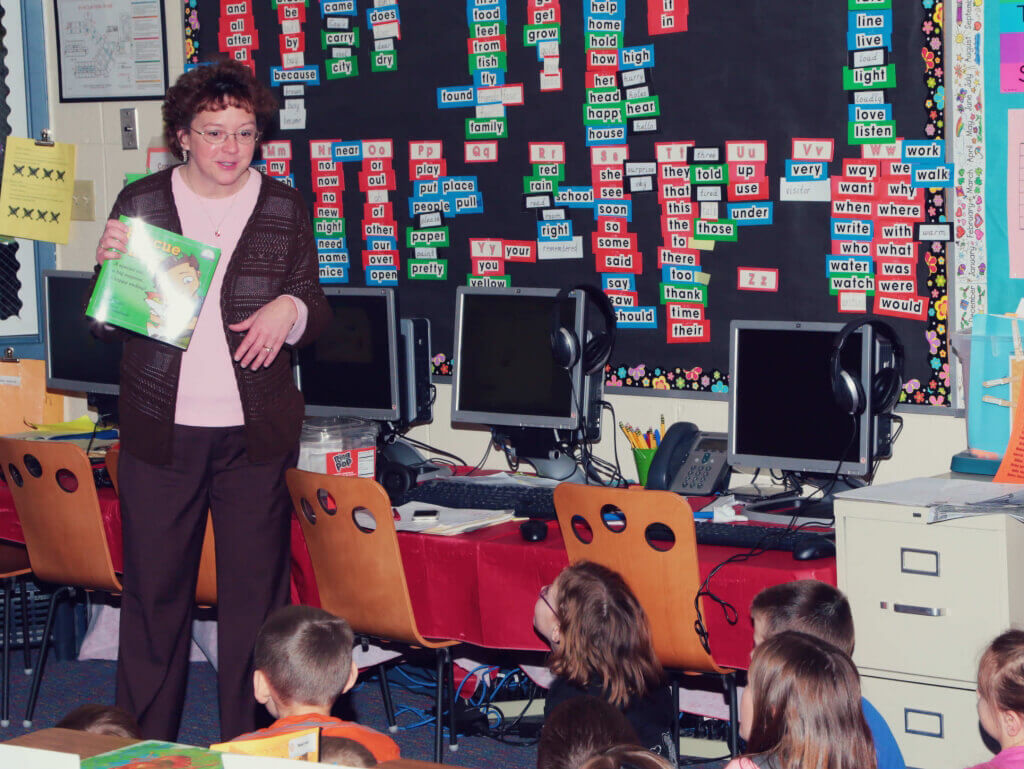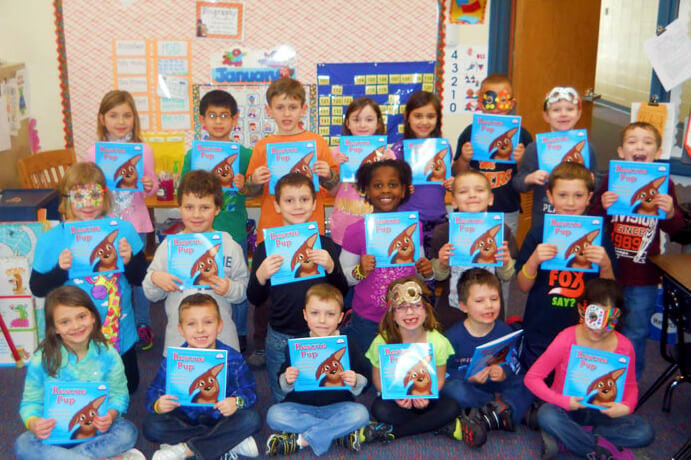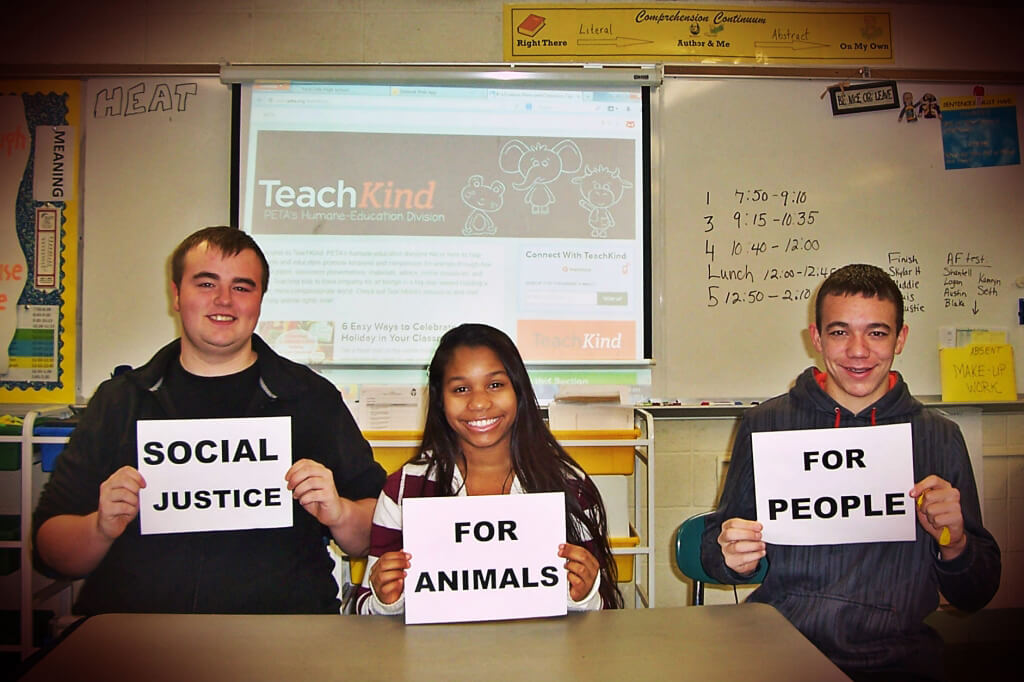Teacher Spotlight: Meet Brenda Fiorini
The Teacher Spotlight highlights the work of various humane educators, giving them a chance to share their stories and tips and inspire other compassionate teachers like you to take action for animals through education.
We’re excited to shine the spotlight on public school teacher and children’s book author Brenda Fiorini of Rock Falls, Illinois. Brenda has been incorporating humane education into her classroom lessons for over two decades, often using trips to her local animal shelter to teach the importance of adoption and spaying and neutering and tying her kind lessons into many different class subjects.
In addition to her constant creative efforts to teach her students kindness to animals, Brenda has authored two children’s books, called Rescue Pup and Rescue Kitty, which explain why we should always adopt animals and how spaying and neutering is the solution to the overpopulation crisis. Since 2013, her books—along with an entire accompanying curriculum that Brenda created with a local animal shelter—have been used in dozens of schools in three different counties in her area, and over 4,000 copies of them are distributed to first-grade students for FREE each year!

We caught up with Brenda to hear more about the creation of Rescue Pup and Rescue Kitty and their accompanying study guides and activities, her efforts in the classroom, and her tips for other aspiring humane educators:
How did you get started with teaching students kindness to animals?
Being involved with animal shelters, participating in animal rescues, witnessing cruelty and neglect, and knowing the effect that bullying has on both animals and humans have all played a part in my promotion of humane education. I moved to an elementary school as a reading teacher, and I soon found out that any topic about animals was always of high interest to children. My humane-education efforts continued to grow. I initiated projects like “Pennies for Pets” and held competitions among different grade levels. I searched online and ordered all the free humane-education materials I could get my hands on. I also shared some activities regarding proper companion-animal care with other teachers so that they could incorporate humane education into their classrooms, too.
How did you come to write Rescue Pup and Rescue Kitty?
I met a local author in 2009, and all the pieces started to fit together: my love of children’s literature, humane education, teaching, and the desire to make a difference for children and animals. A light bulb turned on! I knew I had to write stories for children about animal companions and the journeys they make, showing children that through kindness and compassion, an animal’s life can have a happy ending—and so Rescue Pup was born. It was an exciting and challenging experience to learn the ropes of writing and publishing, but I was so driven because of the purpose for which I was doing it. And as I got deeper into the writing and publishing of my humane education–themed stories, I decided to begin taking classes to become a certified humane-education specialist, which I am currently working toward.

How did you create the accompanying curriculum?
Knowing the focus of the educational system on curriculum these days, I decided to write study guides and activities for each of the books that cater to the needs of the schools. Each teacher also receives a customized felt story board to accompany each book. Children love to write and express their thoughts through words and art. Every time I hear from a child or a teacher who has received the books and materials, I know I have planted the seeds of kindness and that it’s making a difference for children and animals.
What have you learned from your students?
Becoming an author of humane education–themed children’s books has been the biggest accomplishment for me, but the biggest reward is always the result. Teachers have noticed an improvement in their students’ ability to empathize, ask questions, and problem solve. The first thing they say about the books is that the children want to read the stories over and over! They are carrying the message from the books into their lives and showing kindness and kind behaviors toward other living beings. Knowing that an animal received an extra hug, a walk, a pat on the head, or some act of kindness because someone read my children’s books is the biggest accomplishment I could ask for.

What advice do you have for other teachers who want to incorporate humane education into their curriculum?
If you have the passion, you can make it happen. Start by building a classroom library of humane-themed books. For younger students, read these books to the class during story hour and open up unbiased discussions to let the children share ideas—this is powerful critical thinking! For older students, discuss current events and real-world topics along with a humane-themed book. A colleague and I have incorporated humane education into argumentative essay writing at the high school level, covering topics such as dissection, exotic animals as pets, and animals used for entertainment. After students have the opportunity to research these topics, I have noticed that many of their opinions start to change in favor of animal rights.
And there’s no need to purchase materials if your school does not have the budget for it. You can find LOTS of free materials online from animal-welfare organizations, especially PETA’s TeachKind program. You can tie humane education into an already-existing character education program in your school—just ask to add an animal-related component. Humane education is the most relevant, meaningful, and rewarding way to help children learn, and it establishes a foundational purpose for teaching all other skills in school.
*****
Are you going above and beyond for animals in your classroom? TeachKind could shine the spotlight on you next! Send us an e-mail at [email protected] to let us know how you’re incorporating humane education into your curriculum.





